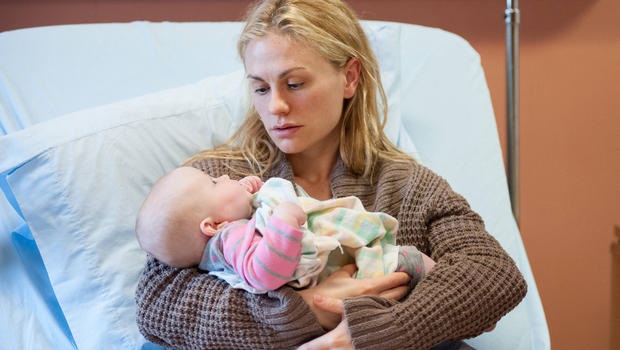
When my mother gave birth to four children in the 1970s, most birth plans looked about the same: have baby in hospital and listen to the doctor.
Now, expectant women have a range of choices and resources to be better informed and prepared. Because of this, more and more women are opting for natural childbirth.
While the trend toward natural is positive, it is critical that layered and nuanced strategies for expectation management become a key part of the birth education. Without it, women with all-natural plans can be left traumatized when the unexpected occurs. In some extreme cases, such as my own, laboring women will cling to their birth plans while medical intervention becomes a matter of life and death.
The fact is, C-sections have been increasing globally for decades, now making up 32 percent of all deliveries in the United States. Of vaginal deliveries, over 50 percent of women who give birth in hospitals receive an epidural.
At the same time, there is growing pressure on women to plan for natural childbirth. Elissa Strauss, columnist on the culture of parenthood, wrote that our culture “has turned labor into a defining moment in women’s lives, their first chance to prove just how devoted a mother they truly are. The criteria for measuring this devotion are based on how little medical intervention they use during labor.”
What’s more, Catherine Pearson, a senior reporter on women and parenting, said, “For those who dream of a [vaginal and epidural-free] birth, there is now an industry in place to foster their belief that they can achieve it.”
When I got pregnant, I believed that (1) natural birth was best for the baby, so it was my obligation to ensure that neither I nor the baby were chemically tampered with; and (2) I alone had the ability to “achieve” the most natural birth possible.
Ever since I was a little girl, I’ve had an aversion to Western medicine and dreaded any non-natural intervention of my body.
My father was a Christian Scientist, and I remember asking him when I was eight years old why he didn’t go to the doctor. He said, “Don’t you think God has the power to heal?” At the time, the answer was an obvious yes.
During my pregnancy, I read countless books on natural childbirth and attended several natural birthing classes. Much of what I learned left me with the impression that all I needed was strong will to experience natural childbirth, and my will was ironclad.
I wrote a birth plan worthy of a drill sergeant. But from induced labor to an epidural to a C-section, nothing went according to the plan.
When my doctor told me I needed an emergency C-section, all I heard was: “I’m going to cut your baby out of you.”
I had been in various stages of induced labor for almost 45 hours at the University Hospital in Leuven, Belgium. My young Flemish doctor had just informed me in broken English that my baby was too big to exit vaginally, had dropped dangerously low, and could run out of air. Yet I still wouldn’t agree to the C-section. I wanted to keep pushing.
In the end, I relented, thanks to my husband. And even though the C-section itself went smoothly, I felt traumatized in the months that followed. I reminded myself repeatedly that the baby and I were healthy, but feelings of failure often clouded my gratitude.
Looking back, I see that I was a slave to the idea of having an idyllic, all-natural birth. Yet that attachment almost cost my life and the life of my baby. Not only that, the C-section might have been avoided all together had I listened to the doctor when she wanted to induce labor on my due date instead of waiting an additional 10 days while the baby grew bigger.
Of course, I’ll never know what might have been, but I do know that birth trauma is real and serious. The following are three healing techniques for women who wanted to give birth naturally and were unable to:
1. If it still hurts emotionally, give yourself the time and space to heal. In the days and weeks after a baby is born, there is no time to focus on our own healing. So we let time pass and eventually force ourselves to let it go. No matter how much time has passed, if memories from childbirth trigger painful emotions, talk to a counselor or trusted friend.
2. Write your birth story to your child (and decide later whether or not to give it to them). Let your child know why you were so committed to having a birth a certain way.
3. Make sure your partner understands how hard it is. It may be difficult for partners to understand the trauma, so it’s important that we communicate how we feel and how they can best support us through the healing.
Going forward, expectation management in natural childbirth education must take center stage in a way that encourages women to plan for natural childbirth while also expanding its definition beyond medical intervention to one that gives us permission to allow things to unfold naturally.
So if the labor is too slow, the pain too much, the baby too big, or the complication too great, we can let go of the plan without judgment to do best what’s best in that given moment.
This way the only thing we’re left holding is our newborn.
Author: Allyson Scammell
Image: IMDb
Editor: Emily Bartran
Copy Editor: Travis May








Read 0 comments and reply